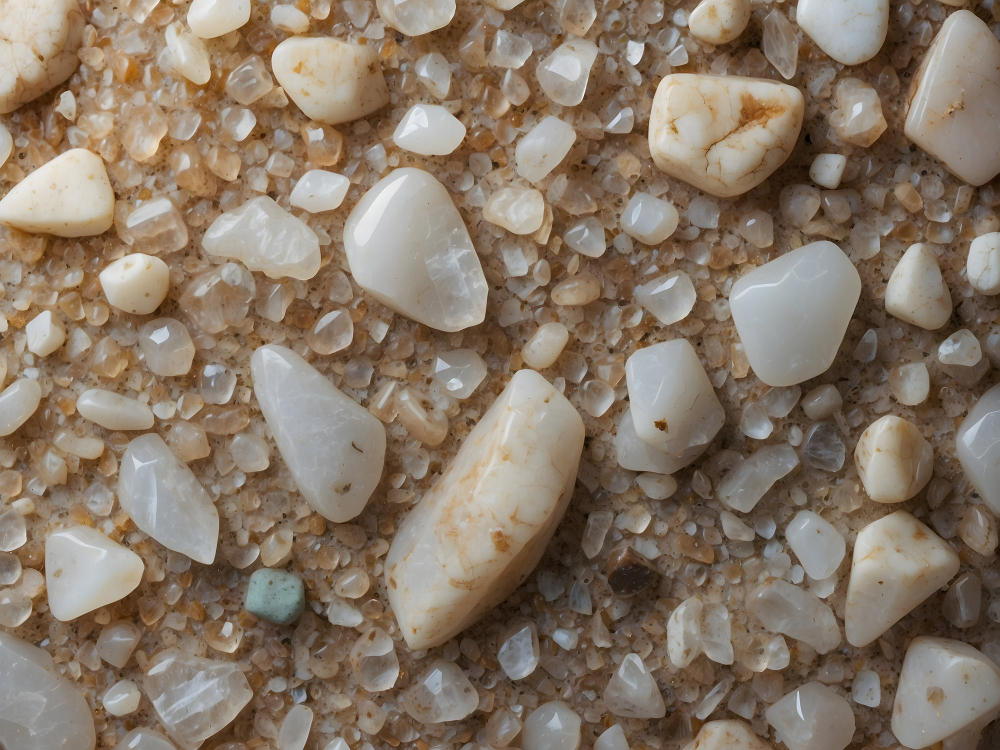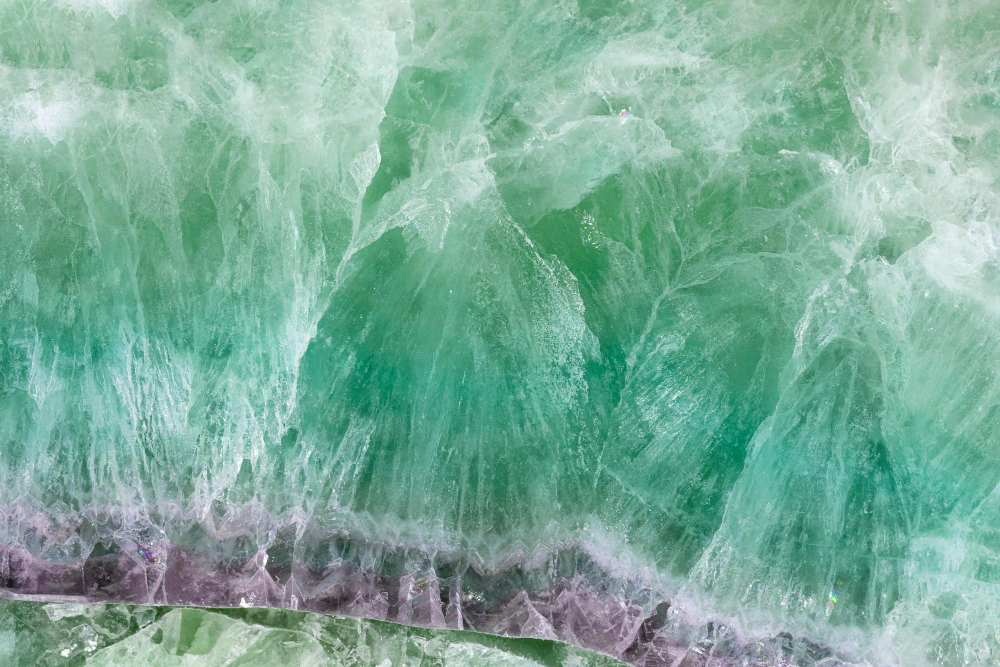Quartz is one of the most abundant and widely distributed minerals in the Earth’s crust. This versatile mineral plays a crucial role in both natural and industrial processes, boasting a variety of forms and applications. This article delves into the chemistry, properties, strength, occurrences, uses, and types of quartz.
Chemistry of Quartz
Quartz is a crystalline form of silicon dioxide (SiO₂). Each silicon atom is surrounded by four oxygen atoms in a tetrahedral arrangement, forming a continuous framework of SiO₂. This structure is incredibly stable, contributing to quartz’s durability and resilience.
Properties of Quartz
Quartz exhibits several notable physical and chemical properties:
- Hardness: Quartz ranks 7 on the Mohs scale of mineral hardness, making it resistant to scratching.
- Luster: Quartz crystals typically have a vitreous (glass-like) luster.
- Color: While pure quartz is clear or white, impurities can impart various colors, resulting in amethyst (purple), citrine (yellow), rose quartz (pink), and smoky quartz (brown to black).
- Transparency: Quartz ranges from transparent to opaque, depending on the variety and presence of inclusions.
- Crystal System: Quartz belongs to the hexagonal crystal system, forming six-sided prisms that end in pyramids.
- Reactivity: Quartz is chemically inert and resistant to most acids, except hydrofluoric acid.
Strength of Quartz
Quartz is renowned for its mechanical strength and durability. Its hardness makes it resistant to abrasion and weathering, which is why quartz grains are often found in sedimentary rocks and soils. Additionally, quartz’s high melting point (about 1,650°C or 3,002°F) and low thermal expansion contribute to its stability under various temperature conditions.
Occurrences of Quartz
Quartz is ubiquitous in the Earth’s crust and can be found in a variety of geological environments:
- Igneous Rocks: Quartz is a primary component of granite, rhyolite, and other felsic rocks.
- Sedimentary Rocks: Quartz grains are a major constituent of sandstone and shale.
- Metamorphic Rocks: Quartz is prevalent in metamorphic rocks like quartzite and gneiss.
- Hydrothermal Veins: Quartz often forms in hydrothermal veins, filling fractures and cavities in rocks.
- Alluvial Deposits: Quartz crystals are commonly found in riverbeds and beaches as weathering products of rocks.

Uses of Quartz
Quartz’s unique properties make it valuable in numerous industrial and technological applications:
- Glassmaking: Silica sand, derived from quartz, is a key ingredient in glass production.
- Electronics: Due to its piezoelectric properties, quartz is used in oscillators and resonators for clocks, watches, and electronic devices.
- Construction: Quartz sand is used in concrete, mortar, and as a filler in asphalt.
- Jewelry: Varieties like amethyst, citrine, and rose quartz are popular in jewelry making.
- Optics: High-purity quartz is used in lenses, prisms, and other optical components.
- Abrasives: Ground quartz is used in sandblasting, cutting, and grinding applications.
- Foundry Sand: Quartz sand is utilized in the casting of metal parts in foundries.
Types of Quartz
Quartz exists in several distinct forms, each with unique characteristics:
- Macrocrystalline Quartz: This type includes well-formed crystals visible to the naked eye. Examples are:
- Rock Crystal: Clear and colorless.
- Amethyst: Purple due to iron impurities.
- Citrine: Yellow to orange, often from heat-treated amethyst.
- Rose Quartz: Pink due to trace amounts of titanium, iron, or manganese.
- Smoky Quartz: Brown to black, typically caused by natural radiation exposure.
- Cryptocrystalline Quartz: Also known as chalcedony, this type consists of microscopically small crystals and includes:
- Agate: Banded and multicolored.
- Onyx: Parallel bands of different colors.
- Jasper: Opaque and often red, yellow, or brown.
- Chert: Microcrystalline and used as a flint substitute.
Quartz is a remarkable mineral with a wide range of properties and applications. Its chemical stability, mechanical strength, and abundance make it an essential material in both natural processes and human industries. From beautiful gemstones to essential components in modern technology, quartz continues to play a vital role in our world



